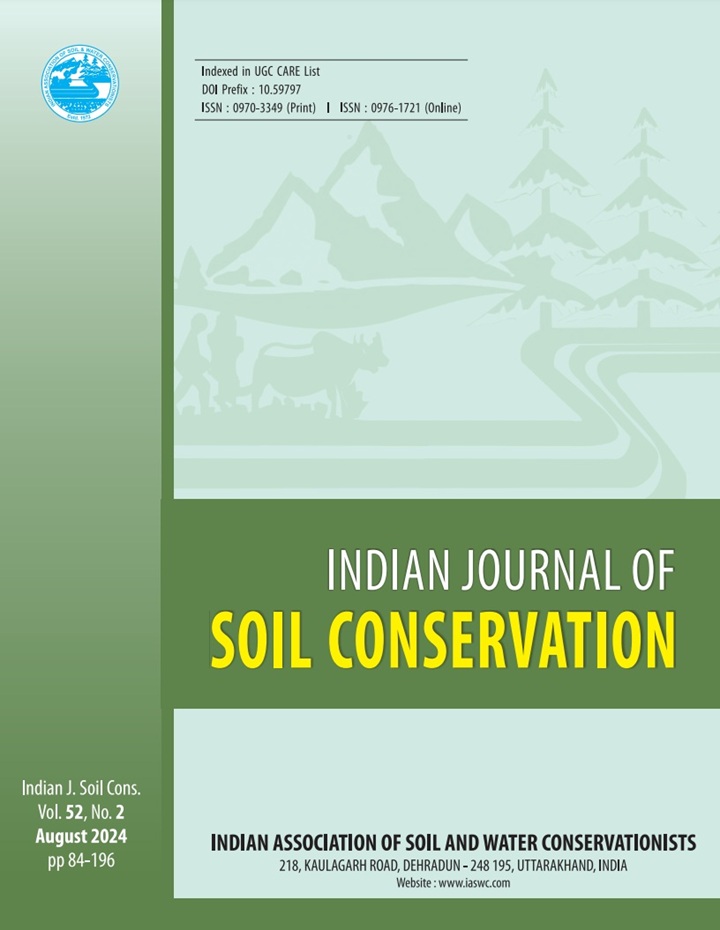Spatial and temporal trends of rainfall and temperature in Sakri river basin, Eastern India
DOI:
https://doi.org/10.59797/ijsc.v52.i2.163Keywords:
Mann-Kendall test, Rainfall trend analysis, Sakri basin, Sen's slope, Spatial and temporal variabilityAbstract
The amount of rainfall is crucial for the hydrological cycle and has significant implications for engineering structures and agriculture. Studying its variations is important, especially due to its effect on water resources. Alterations in rainfall patterns and temperature levels can reduce agricultural output, particularly in eastern India. This study analysed the rainfall and temperature changes in the Sakri river basin (SRB), eastern India, over the last thirty years (1991-2020). Statistical analyses, including the non-parametric Mann-Kendall (M-K) test and Sen's slope estimator (SSE), were utilized to evaluate trends in rainfall and temperature. The spatial distribution of rainfall and temperature in the basin was evaluated using statistical techniques. The long-term analysis exhibits an upward trend in monsoon and annual rainfall, with monsoon contributing around 84% of the total annual rainfall. Annual rainfall increased by 2.3 to 7.6 mm/year, with a percentage change of 0.8 to 2.3%. The maximum monthly temperature significantly increased in September and showed a decreasing trend in May. The minimum monthly temperature also showed significant variations at different stations. The results from this study can provide valuable insights for decision-making in flood and drought management and for understanding the hydrological processes in the basin. This information can helps in formulating adaptive measures for agricultural and water resources management activities.









